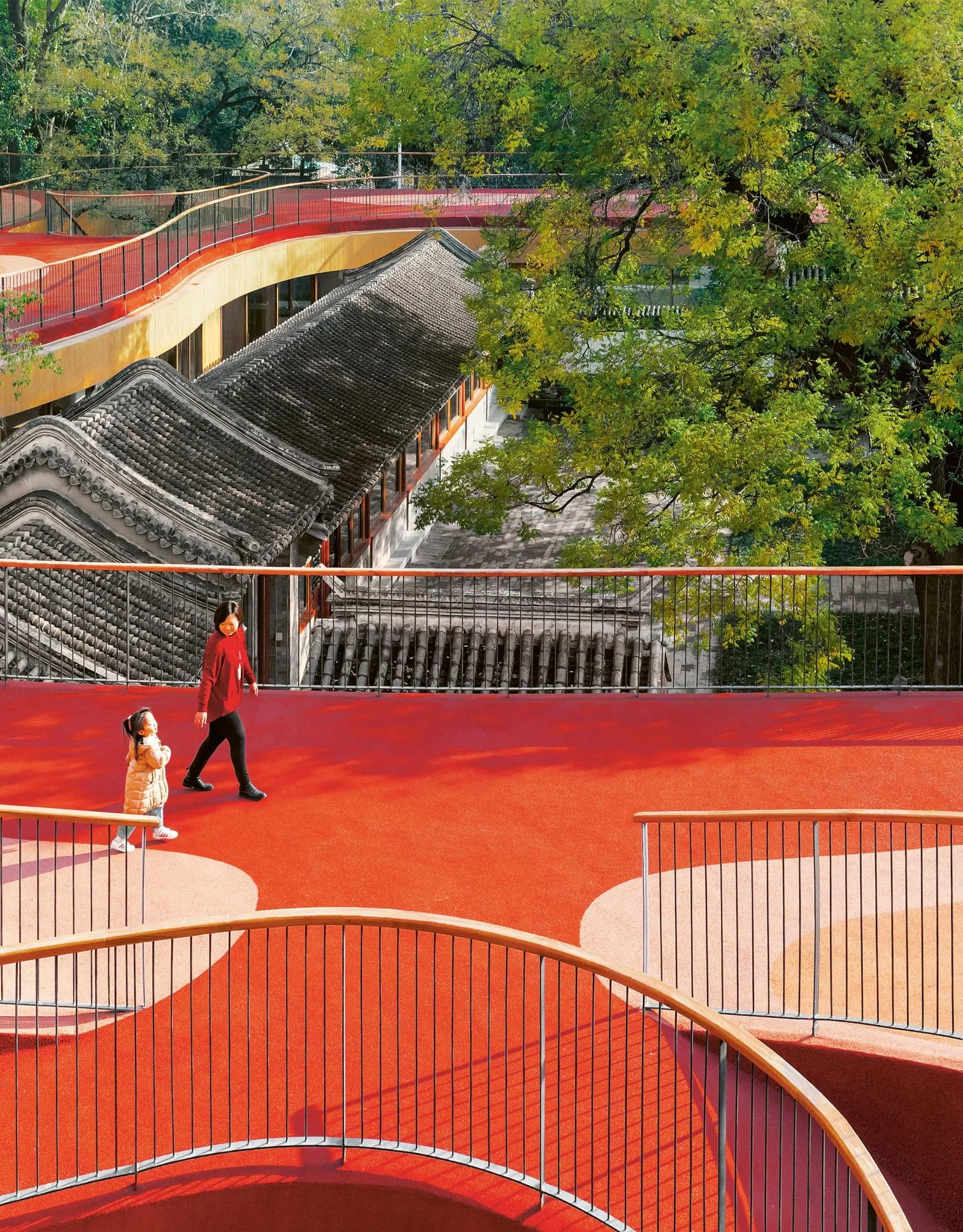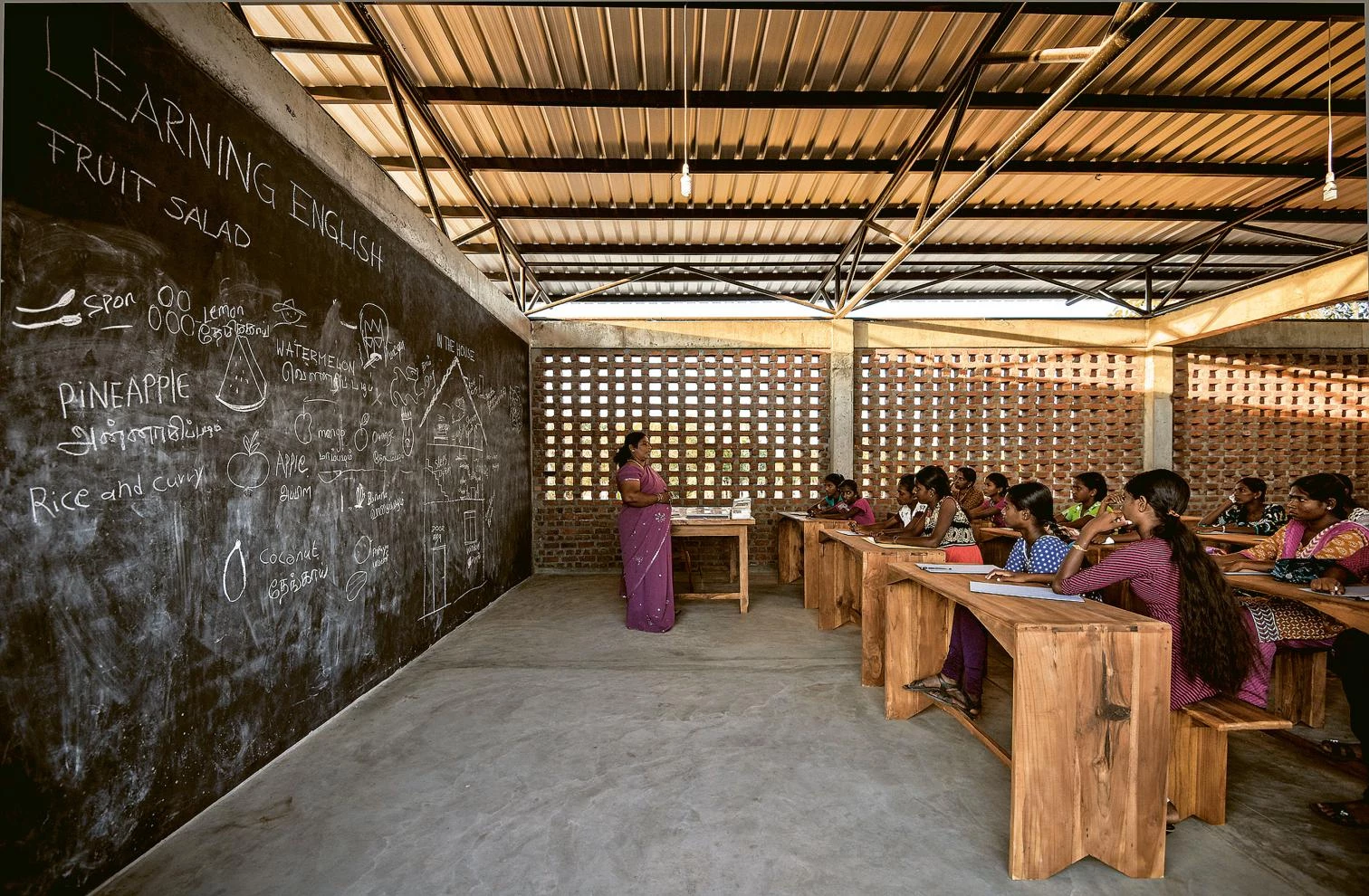Education machines
Four Global Schools

MAD Architects, Le Cheng School, Beijing (China) © Iwan Baan
In education, too, there have been classes. While the great universities born out of medieval enlightenment took up large and sometimes luxurious buildings, primary education practically remained restricted to the domestic scale – to small classrooms within monasteries, and especially to private schools for wards run by generally sadistic tutors like the Dómine Cabra who Francisco de Quevedo sarcastically described in the picaresque novel El Buscón, translated as The Swindler.
Primary instruction was not possible until the invention of the modern school, and this in turn had to wait for the invention of modern states, which from the 19th century onward took on the difficult task of giving minimal teachings to the populace. To pursue this mission, states began to build schools – one per town, one per neighborhood – and hygiene principles soon made them mechanisms for creating healthy and instructive ambiences. Large windows brought sunlight into the classrooms. Corridors were minimized for better cross ventilation. Small and sometimes big libraries provided agoras of knowledge. And gardens gave children – ever more urban – contact with an already-lost nature. Spain had its own excellent examples of this rationalist, hygienist, and civic architecture of education, from the centers falling under the Institución Libre de Enseñanza (ILE) project to the schools designed by Antonio Flórez.
Far from languishing after the destruction wrought by the world wars, the educational drive intensified from 1945 on. Europe arose anew from its ashes. With it a new welfare state emerged, and this is the context in which we have to regard the construction of tens of thousands of schools which, in some cases, were bona fide teaching laboratories, machines à éduquer, such as those proposed by Aldo van Eyck in the 1960s or conceived within the Reggio Emilia philosophy in the Italy of that same period, a method continued in a way by the Colegio Reggio that Andrés Jaque has built on the outskirts of Madrid (see Arquitectura Viva 252).
This dossier of the magazine wishes to contribute to the survey of school architecture using four cases scattered around the world. The Raj-kumari Ratnavati Girls’ School in Jaisalmer (India) by Diana Kellogg engages in dialogue with traditional architecture while liberating women through education, and the Jadgal Elementary School in Seyyed Bar (Iran) by BAAZ Office responds typologically to its harsh surroundings. For their part, the Wayair School in Ulyankulu (Tanzania) by JEJU.studio fits itself into the hygienist tradition in its effort to mitigate the region’s extreme climate conditions, and the Bambú kindergarten in Las Condes (Chile) by Gonzalo Mardones addresses a more urban context by means of a sustainable and rigorously modular architecture.

feat.collective, Centro Lanka, Batticaloa (Sri Lanka)






